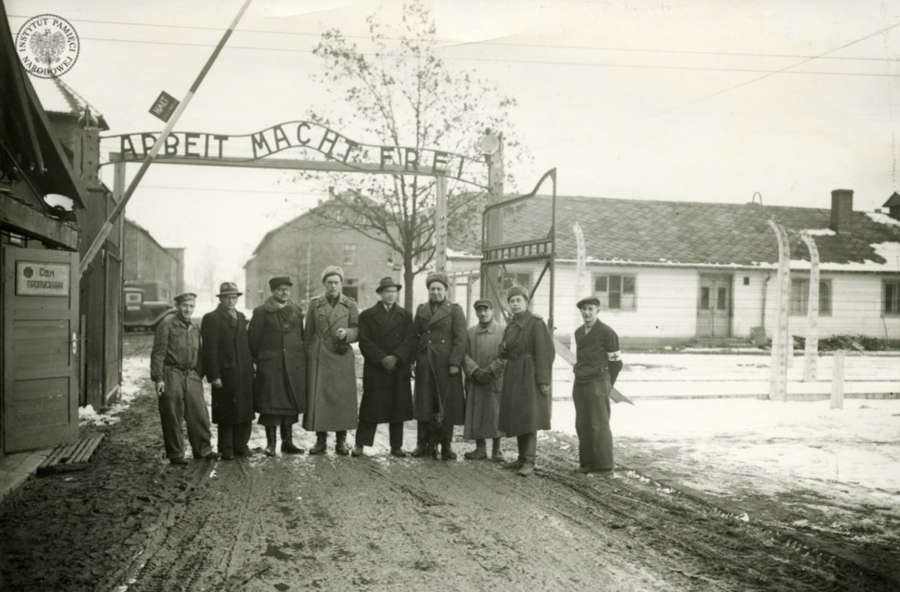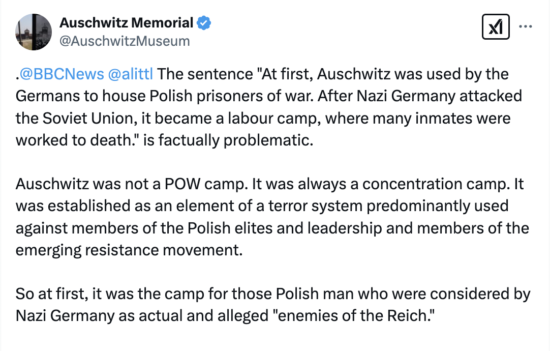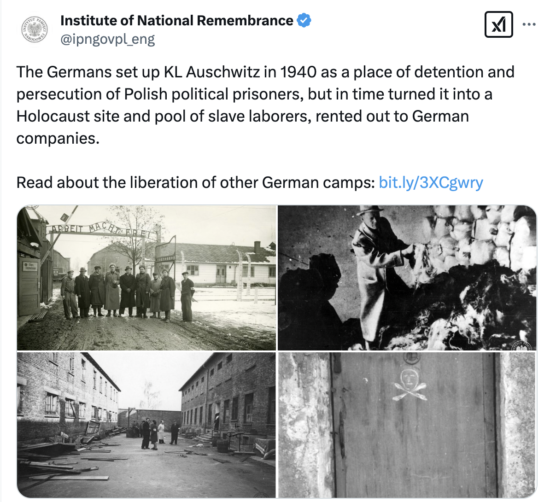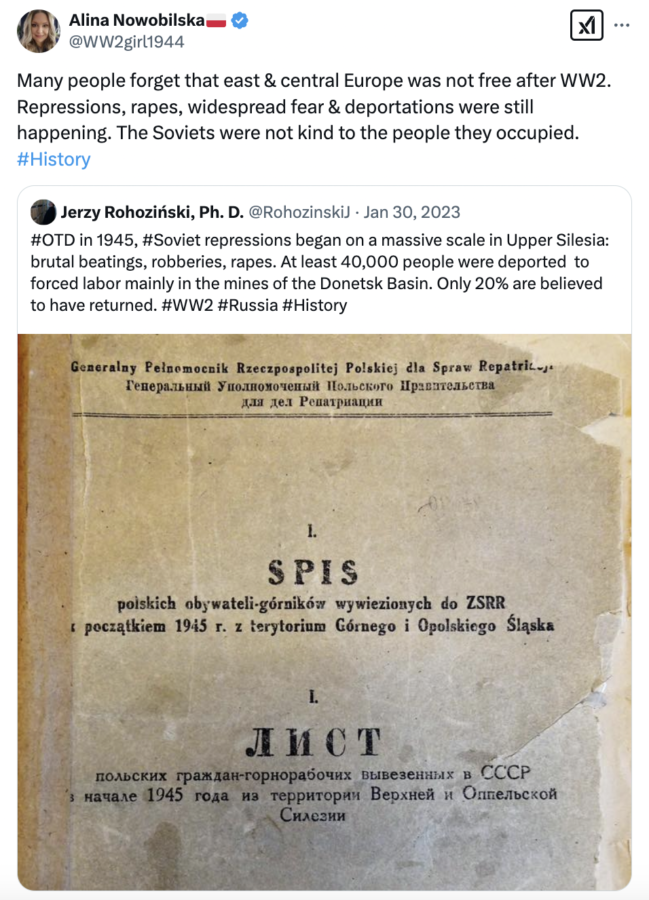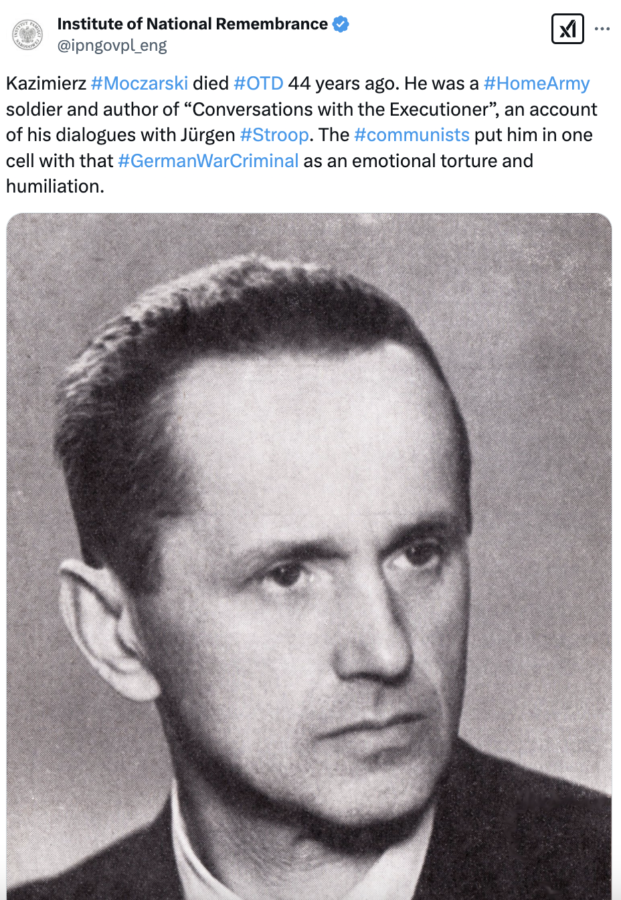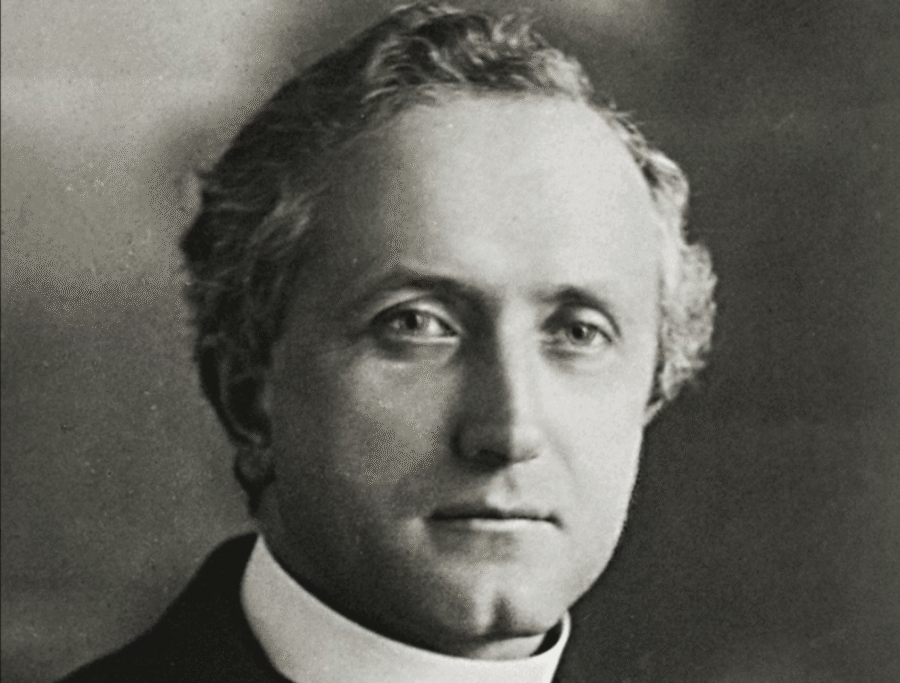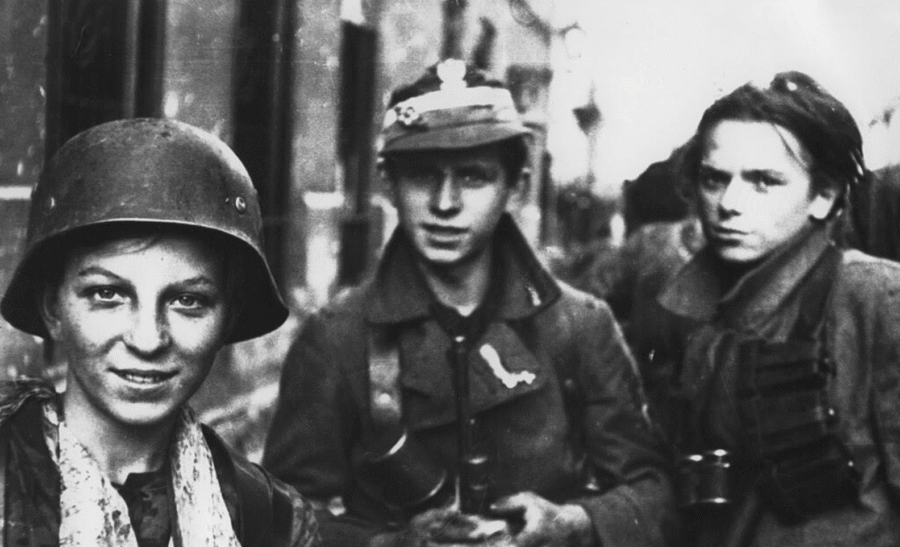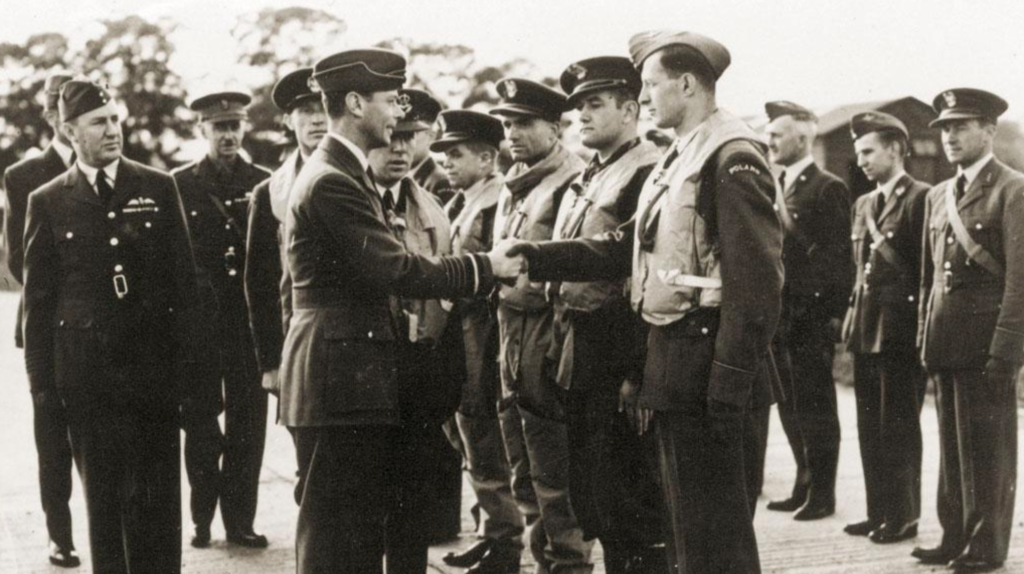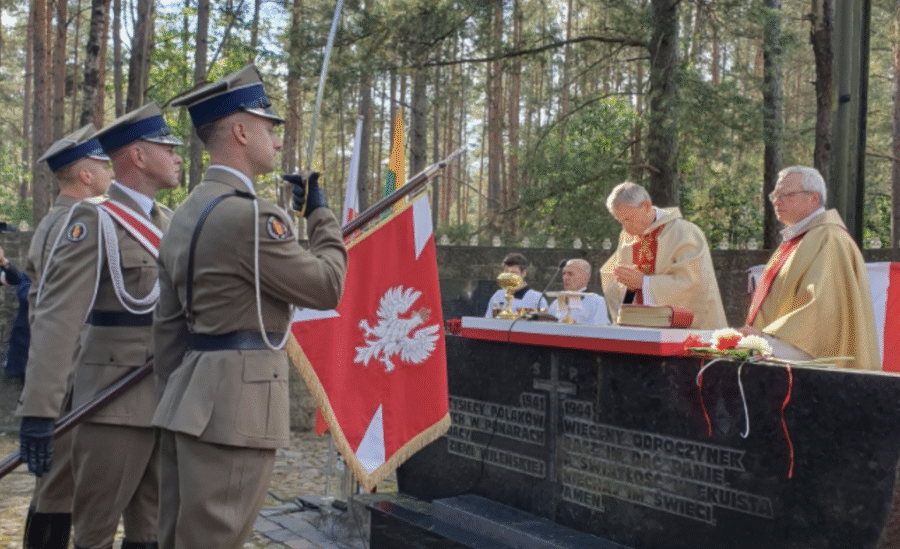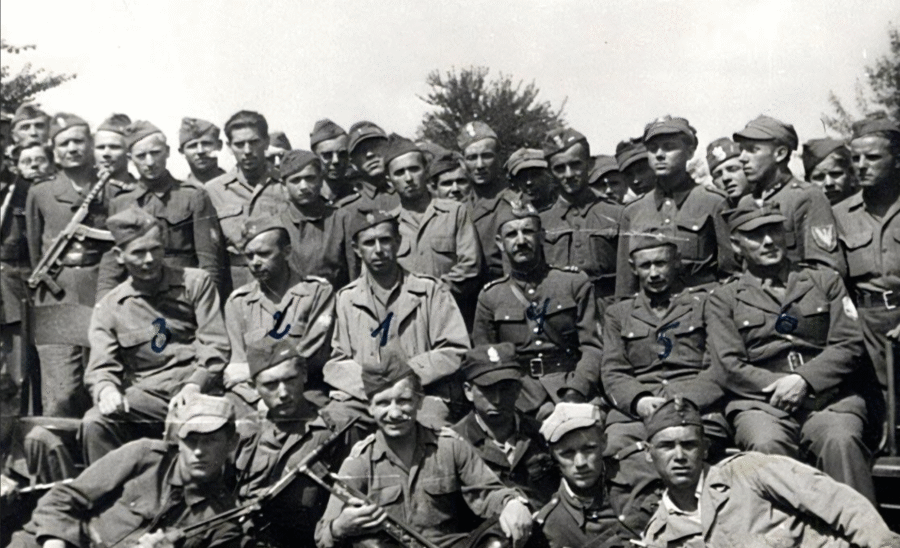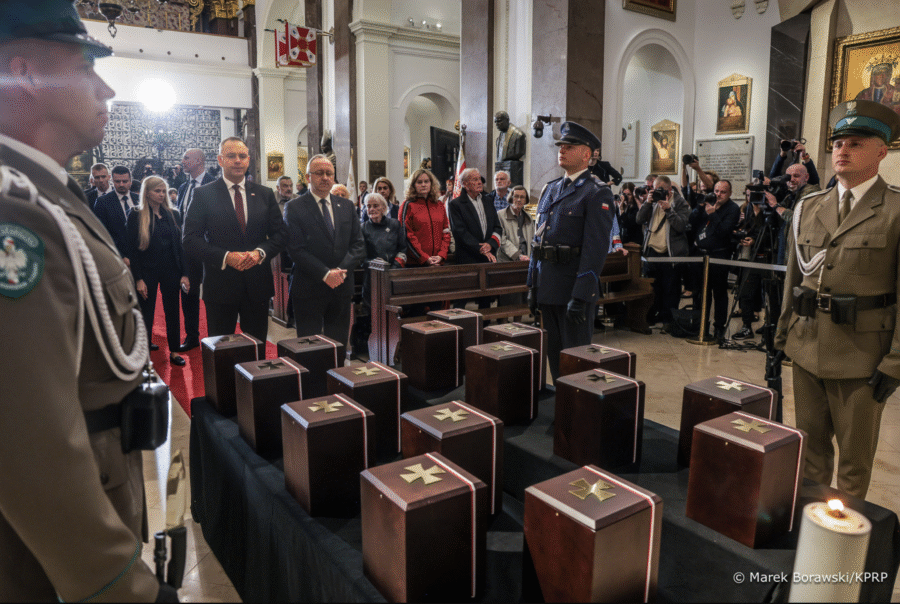The fate of the ex-German Nazi death camp in Auschwitz after its liberation remains a little known charter of the history of World War 2. Just months after the last prisoners left the camp it was used by the Soviets as a POW camp for Germans but also as a mass prison for those who opposed their occupation including Polish soldiers and innocent civilians.
It is important to remember that the Auschwitz German concentration camp was first established as an extermination site for the Polish elite and patriotic youth. The first transport of prisoners included members of the elite but also very young Polish scouts.
The second camp of the Auschwitz complex called Birkenau soon became above all a place of mass extermination of European Jews and became the largest German extermination camp.
There, in specially designed complexes of gas chambers with crematoria, the selected groups of prisoners were killed instantly after their arrival.
From 17 to 21 January 1945, the German SS troops evacuated the Auschwitz death camp complex, leaving the site with about 58,000 prisoners and forcing the majority of them to walk – under harsh winter conditions – several dozen kilometres to Wodzisław Śląski and Gliwice.
From there, the prisoners were transported by trains to other concentration camps. Just after the evacuation, the SS guards blew up the buildings of the gas chambers and crematoria.
Because most survivors required immediate medical attention, the Soviet military authorities arranged two field hospitals within a few days. In the first days of February, the hospital was also set up by Polish Red Cross volunteers, who took care of the prisoners.
The hospitals functioned in blocks of the main camp, where patients were transported from Birkenau and Monowitz.
Some of the objects found in the camp were used for the hospitals – blankets, clothes, medications and equipment from the prisoners’ rooms, including three-storey bunks that were cut to make single-level beds.
The hospital served the 4,500 survivors, most of whom were successfully restored to health. However, despite those efforts at least 500 of them died. The PCK hospital functioned until the autumn of 1945.
In the spring of 1945, the Soviets established two temporary camps for German prisoners of war. The first was initially located in the western part of the former main camp, and from June 1945 it covered the entire area of the former camp.
The second camp was located in sectors BI and BIIa (until September 1945) of the former Birkenau subcamp. The German prisoners of war were mostly incarcerated at Auschwitz, while at Birkenau the Soviet authorities held Polish partisans, anti-communist oppositionists and civilians from Upper Silesia.
It is said that the camp incarcerated around 15,000 people at the time.
Although their group consisted of many Poles, they were all treated as Germans by the Soviet side. In time, most of them were released, but some were deported with the prisoners of war to gulags in the Soviet Union.
The chief of the POW and the civilian camp was Colonel Maslovoyev, who operated without any regard even for the new Polish communist state administration. He was also not interested in cooperating to document the German atrocities and pass them to the Commission for the Investigation of German Crimes.
The camp at the former Auschwitz I existed until the autumn of 1945, and at the former Birkenau until February 1946.
Between 1945 and 1950, more than two hundred forced labour camps for Poles that opposed the Soviet occupation, Ukrainians, Lemkos and Silesians operated in Soviet-dominated Poland.
The tragic history of those sites, but also many communist post-war prisons created a situation in which Polish partisan war heroes were incarcerated together with innocent civilians of non-Polish ethnicity, Nazi collaborators or German mass murderers.
One of the most tragic examples of that mindless Stalinist policy was depicted in the famous “Conversations with an Executioner” book by Kazimierz Moczarski, describing his conversations with Jurgen Stroop during their time in the same prison cell.
Moczarski, an AK officer, found himself next to a man responsible for the destruction and murder of the Polish Jews in the Warsaw Ghetto.
Nazi infrastructure, abandoned by retreating German crews, was used by the communist repression apparatus.
At the turn of 1945 and 1946, the Soviet authorities gradually handed over the former campsites to the new Polish authorities. Initially, they were placed under the jurisdiction of the Provincial Branch of the Provisional State Administration.
In February 1946, the Main Office of the TZP placed the barracks at the former Birkenau site at the disposal of the Ministry of Reconstruction. The facilities at the Auschwitz I site had already come under the supervision of the Ministry of National Defence.
Already in December of 1945, the decision was made to protect the former site of the German death camp in Auschwitz.
The legislature started its work on a bill to establish the museum, and the Ministry of Culture and the Arts decided to set up the so-called permanent protection site of the Auschwitz camp and begin organising the museum.
A four-member board, made up of former Auschwitz prisoners, was formed and began work on the campgrounds in mid-April 1946 which led to the establishment of the modern Auschwitz Memorial.
The official opening ceremony of the museum took place on 14 June 1947, on the seventh anniversary of the arrival of the first transport of Polish political prisoners. The museum was officially established with a special act on 2 July 1947.
The network of Soviet labour and concentration camps across Poland, mostly operating in the ex-German death camps, remains an unknown charter of World War 2 and the post-war period that left many thousands of Poles killed or physically and psychically mutilated even after the end of the worst horrors.
None of those responsible for the post-war repressions were ever put on trial for their crimes.
Source: Pamięc.pl
Photo: @ipngovpl_eng
Tomasz Modrzejewski


